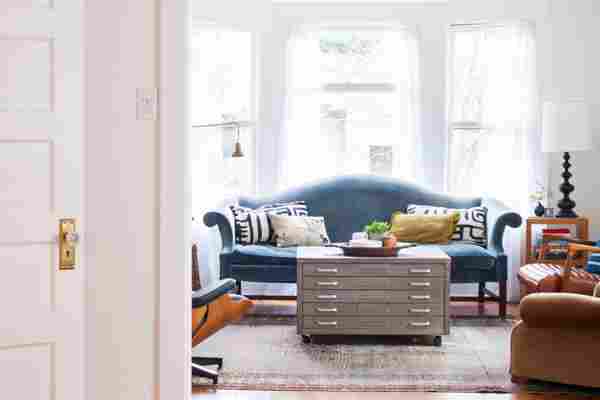
If you spend any time at all on design sites and social media, then you’re familiar with the current bright white wall trend. Stark minimalistic interiors are everywhere, from HGTV to Instagram.
White walls not only open up a space, but they also feel bright and provide a clean backdrop against which art and decor can take center stage. (There’s a reason that museums and creative workspaces often opt for basic white, after all.) But, before you take the plunge and put your paint roller to work, there are a few things to keep in mind.
Don’t go with the first white you see: There are so many shades of white out there, so take your time picking the one that works for your space. It’s tempting to grab the purest, whitest white you see on a paint chip. But bright white can look like primer—unfinished and sterile. It can also have a cold, blue-ish cast that’s harsh on the eyes. Consider a shade of white that has a touch of warm pigment in it for something that feels more homey.
It affects other decor decisions: While many people can rock the all-white-everything look, it’s hard to pull off white furniture, artwork, and walls without your space looking like a sad hotel or office. To avoid this, add interest with textured decor or try a gloss or semi-gloss finish.
“It sounds counterintuitive, but bright white walls can actually be a great tool for a color lover; they provide a fresh backdrop for you to layer in colorful furniture, art, and accessories,” says designer Tara Dawkins .
White paint requires more upkeep: When hands repeatedly touch light-colored walls near light switches, doors, and cabinets, or if furniture bangs up against a white wall, the dirt and marks show. And if you have a young child, prepare yourself for seemingly endless touch-up jobs. If this is a concern, try a semi-gloss or gloss finish to make cleaning easier.
Light matters: Lighting is a big design consideration—especially when you have white walls. While white paint can brighten a dark room and make a space feel larger, it will look different depending on the type of light you have. Test out different whites in your actual space, see how it looks at different times of the day and night, and then choose accordingly. You may also have to swap out your lightbulbs for something warmer or cooler, depending on the type of light they put out.
You still have to paint well: Although errant white paint brushstrokes aren’t as visible as other colors, you’ll still see mistakes when things get sloppy. As with any paint job, prep is key, so make sure to tape correctly and take your time rolling and brushing.
Tread carefully with home offices: Recent research suggests that employees actually make more errors while working in spaces with white walls (compared to blue and red walls). There’s a decent amount of evidence out there related to color and its psychological impacts—all worth considering before choosing paint.
And if you paint your walls white and hate it, you’re in luck: White is the easiest color to paint over.
Related:
14 Designers Share Their Favorite Shades of White Paint
7 Times Simple White Paint Drastically Transformed a Room
Here’s the Trick to Picking the Very Best Paint Color For Your Walls












